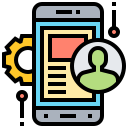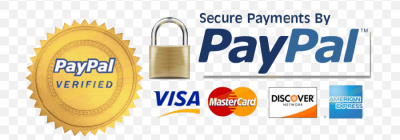The fitness app industry is booming, with millions of users relying on apps like MyFitnessPal and Strava to track their workouts, monitor their diet, and stay motivated. If you want to build a fitness app, you need to focus on usability, personalization, and seamless integrations. This guide will walk you through the steps required to create a successful fitness app.
Do you need app development services ? No problem, just get in touch with us and lets build the app for you.
Step 1: Define Your Fitness App’s Niche and Audience
Before starting development, you need to define your app’s niche and target audience. MyFitnessPal focuses on calorie tracking and nutrition, while Strava is tailored to running and cycling enthusiasts. Understanding your audience will help you determine the key features your app should offer.
Consider These Factors:
- Who is your target audience? – Casual users, athletes, bodybuilders, or general fitness enthusiasts?
- What will your app focus on? – Nutrition tracking, workout tracking, social fitness, or personal training?
- Will it integrate with wearable devices? – Smartwatches, fitness bands, or heart rate monitors?
- How will you monetize it? – Subscription plans, one-time purchases, ads, or premium features?
Defining your niche ensures that you build an app that meets user expectations and differentiates itself in the market.
Step 2: Choose the Right Technology Stack
Your technology stack will determine your app’s performance, scalability, and security. You can develop a native or cross-platform app depending on your budget and target devices.
Recommended Tech Stack:
- Frontend: React Native or Flutter for cross-platform compatibility.
- Backend: Node.js, Django, or Ruby on Rails.
- Database: Firebase, PostgreSQL, or MongoDB.
- APIs: Google Fit API, Apple HealthKit, and Strava API for fitness tracking.
- Cloud Storage: AWS, Google Cloud, or Firebase Storage.
- Payment Processing: Stripe, PayPal, or in-app purchases for subscriptions.
Choosing the right tech stack ensures smooth functionality and easy scalability as your app grows.
Step 3: Design an Engaging User Experience (UX)
A well-designed fitness app should be easy to use, visually appealing, and engaging. Users should be able to track their progress effortlessly and stay motivated.
Essential UX Features:
- Simple Onboarding Process – Guide users through app setup and preferences.
- Personalized Dashboards – Display fitness stats, progress, and achievements.
- Workout and Nutrition Logging – Allow users to input workout routines and track food intake.
- Gamification Elements – Include badges, rewards, and leaderboards to motivate users.
- Push Notifications & Reminders – Encourage users to stay consistent with their fitness goals.
A great UX ensures higher engagement, retention, and user satisfaction.
Step 4: Implement Key Features
To compete with established apps, your fitness app must offer a rich feature set. These features should be tailored to your chosen niche while ensuring usability and efficiency.
Must-Have Features:
- User Registration & Authentication – Sign-up via email, Google, or social logins.
- Activity Tracking – Record workouts, runs, and calorie expenditure.
- GPS and Route Mapping – For apps focusing on running and cycling.
- Wearable Integration – Sync with Apple Watch, Fitbit, and other devices.
- Diet and Nutrition Tracking – Allow users to log meals and track calories.
- Social Features & Community – Friends, challenges, and activity feeds.
- Progress Analytics – Graphs and reports on fitness trends and achievements.
Incorporating these features will ensure that your app meets user expectations and provides a comprehensive fitness tracking experience.
Step 5: Ensure Data Security and Compliance
Fitness apps handle sensitive user data, including health and personal details. Ensuring security and compliance is critical to building trust with your users.
Ways to Ensure Security:
- End-to-End Encryption – Protect user data from unauthorized access.
- GDPR & HIPAA Compliance – Ensure that user data is handled legally and ethically.
- Secure Authentication – Implement multi-factor authentication (MFA).
- Regular Backups – Prevent data loss by backing up user progress and stats.
- Fraud Detection & Reporting – Monitor suspicious activity and prevent abuse.
Prioritizing security and compliance helps establish credibility and protect user data.
Step 6: Develop a Monetization Strategy
Monetizing a fitness app effectively ensures its sustainability and growth. There are multiple revenue models to consider.
Monetization Options:
- Freemium Model – Offer free basic features with an option to upgrade to premium.
- Subscription Plans – Monthly or yearly plans for exclusive features and content.
- In-App Purchases – Paid workout plans, diet plans, or personal coaching.
- Advertisements & Sponsorships – Partner with fitness brands and display ads.
- Affiliate Marketing – Promote fitness gear, supplements, or online courses.
A well-planned monetization strategy ensures long-term profitability and app maintenance.
Step 7: Market Your Fitness App Effectively
A successful app launch requires an effective marketing strategy to attract users and drive engagement.
Effective Marketing Strategies:
- SEO & Content Marketing – Blog posts, fitness guides, and app store optimization.
- Social Media Campaigns – Engage users on Instagram, Facebook, and TikTok.
- Influencer Collaborations – Work with fitness influencers to promote the app.
- Paid Advertising – Google Ads, Facebook Ads, and influencer-sponsored posts.
- Referral Programs – Reward users for inviting friends to join the platform.
A strong marketing plan ensures better visibility and user adoption.
Step 8: Continuously Improve and Scale
After launching, ongoing updates and improvements are necessary to stay competitive and enhance user satisfaction.
Scaling Strategies:
- Analyze User Behavior – Use analytics to optimize features and UI.
- AI-Powered Personalization – Offer personalized workout and diet recommendations.
- Expand Device Compatibility – Support more wearables and smart devices.
- Introduce Virtual Coaching – Live training sessions with fitness professionals.
- Build a Web Version – Expand access to desktop users.
Continuous improvements keep users engaged and encourage long-term app usage.
Conclusion
Building a fitness app like MyFitnessPal or Strava requires a combination of strategic planning, user-friendly design, and advanced technology. By defining your niche, selecting the right tech stack, ensuring security, and implementing engaging features, you can create a competitive fitness app. A strong monetization and marketing strategy will further ensure its success. Stay committed to continuous improvements, and your app can become a valuable tool for users on their fitness journey.








